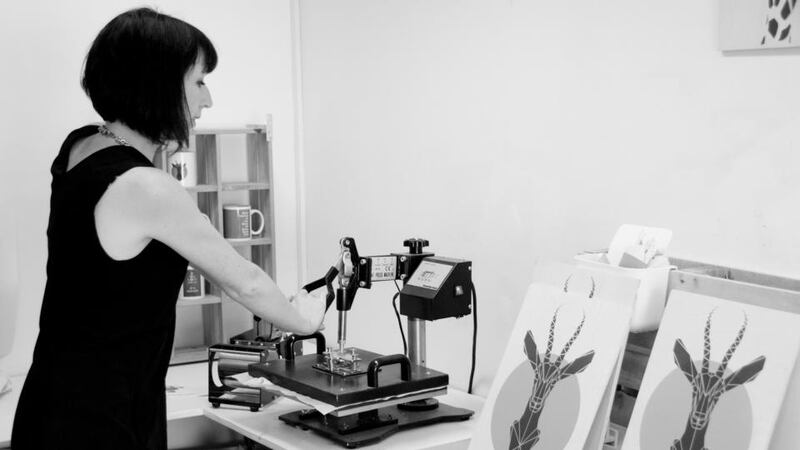“The online art world has grown tremendously in the last three years, but it’s still small in Ireland. I think there’s a huge opportunity for businesses,” says Kritika Ashok, founder of two e-commerce art sites.
The former Accenture executive found herself in the art world by chance. During a once-in-a-lifetime trip to Antarctica, Ashok snapped a photo of a gentoo penguin in a snowstorm. She loved the photograph so much, she looked into commissioning a painting of it when she got home.
The lowest quote from an artist was £1,000 (€1,413), and Ashok says there was no way she could justify spending that much on the painting.

She gave up on the idea until a friend got back from travelling the world four years later. He had found a number of artists available for commissioned work, and Ashok finally got her painting for €180. It got her thinking. “I thought there must be other people who want art but don’t want to pay the £1,000 price tag.”
Fast-forward to her two e-commerce art sites. At myartgallery.com, customers can have their favourite photos turned into paintings by artists around the world. The site also sells painted reproductions and original art.
Incredibleireland. com focuses on original paintings and commissions of Irish landscapes for tourists and expats.
“A lot of people think of commissioned art as something exclusive or something very elite. It’s usually something you only see in big houses. It can come across as pretentious. It’s actually possible to do and it’s quite affordable,” she says.
Commissioned photos at myartgallery.ie start at €235 and average €310 for a 16in by 20in (41cm by 51cm) painting.
Ashok says that straddling the line between art and business is tricky because a lot of people aren’t aware that online art galleries even exist. She has also had a crash course in art.
“I’m in the art world, but I’m more of a business person, so I’m trying to learn about art while running the business itself,” she says. “It’s challenging. Just learning about the industry itself is tricky, but it’s been fun. I love it. Seeing people’s faces when they get a painting or hearing how happy they are is amazing.”
Ashok started working on the business full-time last year, and she’s learning as she goes. She has realised that a B2B approach, which she used in a business she had in India, didn’t work as well in Ireland. There, her business relied on referrals from wedding and baby photographers. Here, she targets customers directly.
Stencilize
“I’ve come across a lot of people that have changed career and changed paths in the last few years because of the recession,” says
Aoife Hanrahan
, who is one of them. The interior architect-turned-stencil artist started her online shop,
stencilize.ie
, two years ago.
Hanrahan had worked in architecture for years, first with a company and then freelancing. “Then the recession hit and everything went pear-shaped,” she says. She decided to jump into stencil art and says the business has been “growing quickly and organically since then”.
Stencilize is a range of geometric, origami-inspired designs on prints, clothing, cushions and mugs, with new things on the way. Hanrahan also has a greeting card range called “simple things”. Her products are stocked in a few shops in Dublin, Hanrahan is concentrating on online sales.
“I think Ireland’s becoming much more open to hand-crafted and locally produced crafts and design. I think it’s really taken off and Irish people are very supportive of it.”
Hanrahan has availed of some of the supports put in place in the last few years for art-based businesses.
"I'm a member of the Design and Crafts Council of Ireland. They're very helpful. They've got really great information and supports for things like export and getting into stores. That's been a really useful resource for me."
She says making people aware why hand-crafted goods cost a bit more than mass-produced art has been a challenge.
“You have to explain the work that goes into making products, the money that goes back into the community and how beneficial it is to support local enterprises. I think a lot more people do make the extra effort to buy local and shop local, which is great.”
















